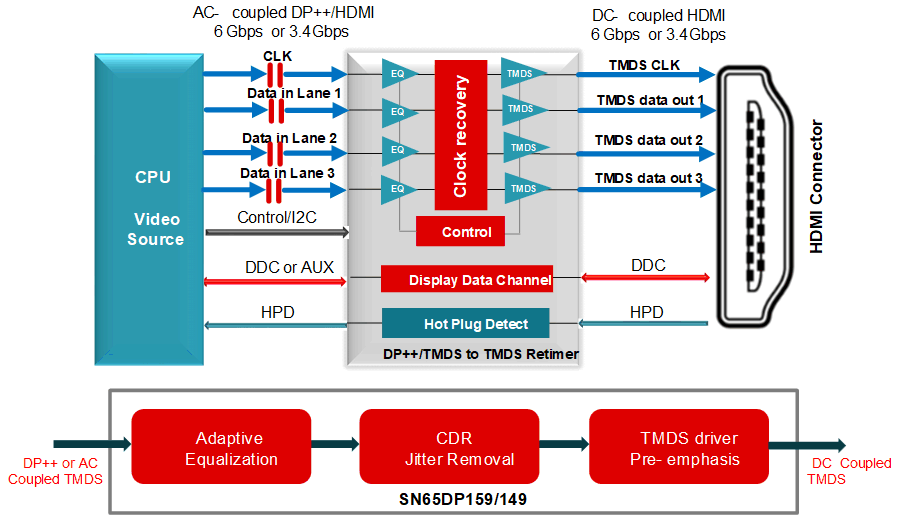SNLA388 June 2021 DS160PR410
2.2 HDMI and DisplayPort Interface
In an industrial PC system, HDMI and DisplayPort are used to connect external displays for high resolution videos or human machine interface (HMI). HDMI can support 3.4Gbps, 6Gbps and 12Gbps. DisplayPort can support 5.4Gbps, 8.1Gbps and 10Gbps and beyond. These video interfaces are facing the same challenge as USB- signal loss from PCB trace and cable, as well as jitter can impact the video fidelity and decrease the display quality.
Signal Conditioners such as redrivers and retimers can implement several features to improve signal integrity. A good signal conditioner can support adaptive or fixed equalization to clean up inter-symbol interference jitter or loss from bandwidth limited board traces and cables. Retimers use clock data recovery circuits (CDR) to clean up random, phase and sinusoidal jitter. Good retimers have wide band CDR tracking and narrow band jitter cleansing as well as the capability to work with wide frequency ranges. They also have selectable source termination to match traces and impedance to reduce reflections in the signal path. It provides several features for passing compliance and reducing system-level design issues, which compensates for the attenuation when driving long cables or high loss board traces.
Figure 2-5 shows example of an HDMI connectivity in a typical industrial PC. In this implementation SN65DP159, which is a dual mode DisplayPort to HDMI2.0 retimer up to 6Gbps, is used as level shifter retimer. SN65DP149 is a retimer supporting HDMI1.4b up to 3.4Gbps. Both can provide AC coupled to DC coupled physical layer conversion (level shifting).
 Figure 2-5 HDMI2.0 Retimer Example Using
TI SN65DP159
Figure 2-5 HDMI2.0 Retimer Example Using
TI SN65DP159